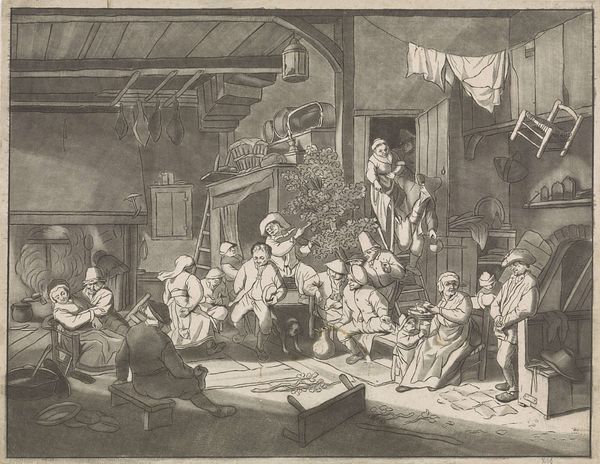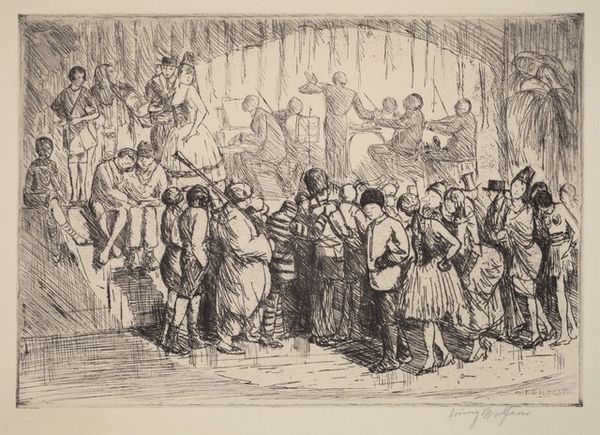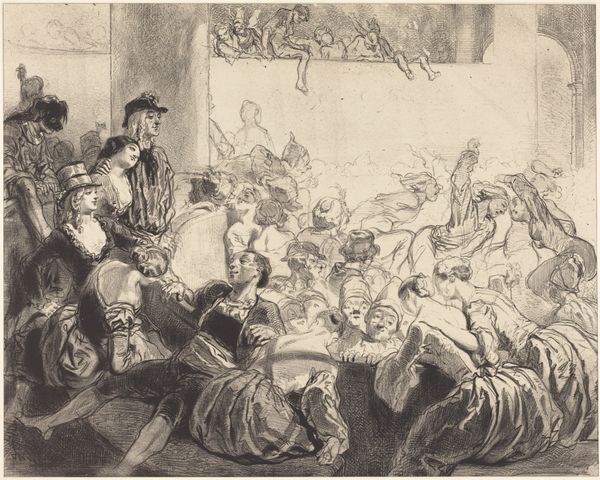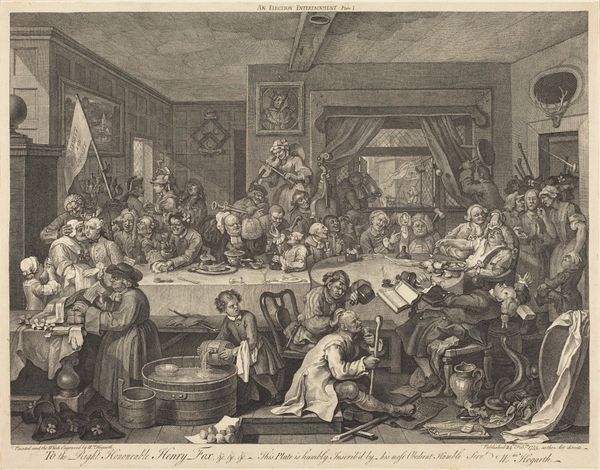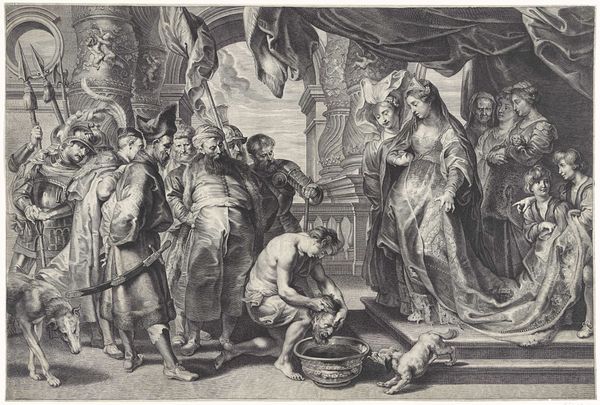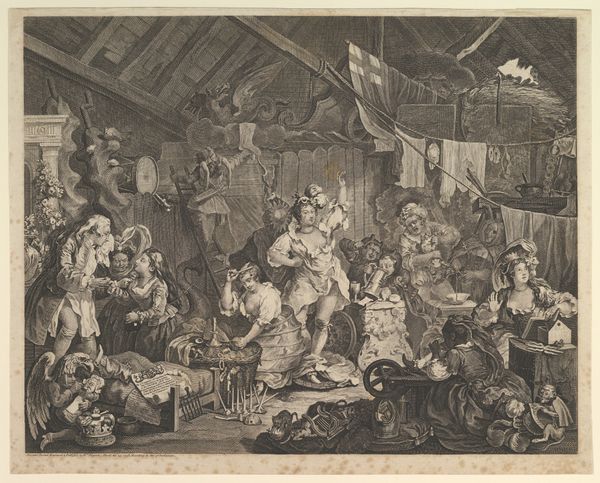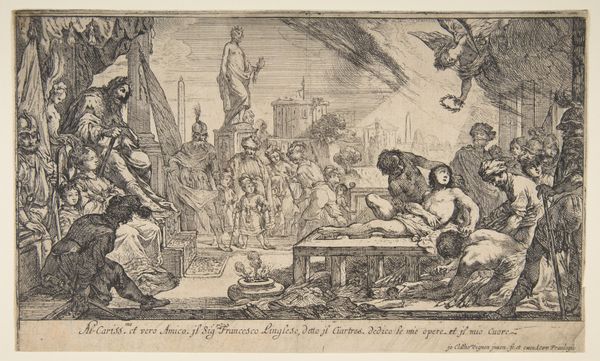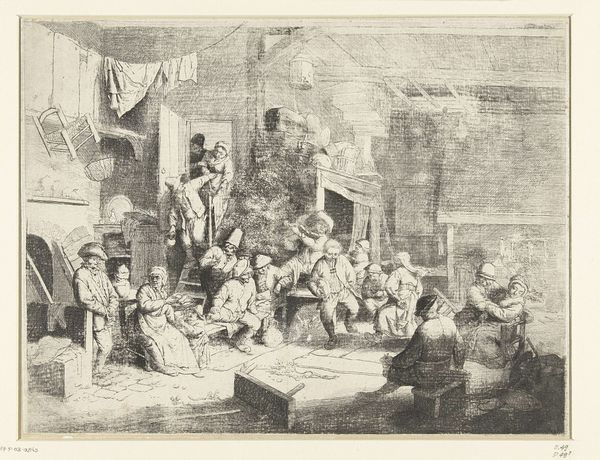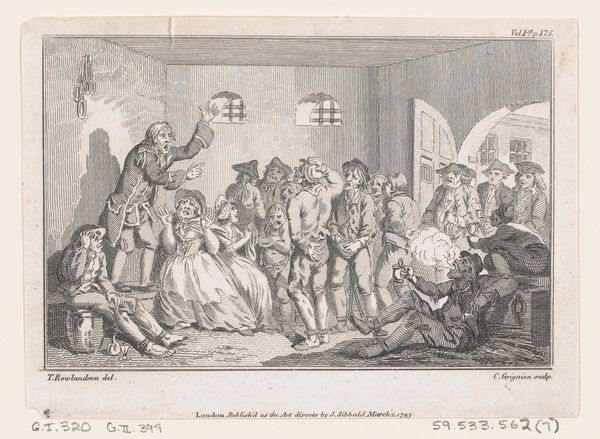
Dimensions: 332 × 405 mm (plate); 340 × 415 mm (sheet)
Copyright: Public Domain
Editor: This etching, "The Quacksalver," created in 1785 by Franz Anton Maulbertsch, captures a lively, almost chaotic scene. The details achieved through engraving and etching create an exciting mood; there are so many interacting figures, and the composition keeps my eye moving around. How would you interpret this complex artwork? Curator: Note the stark contrast between light and shadow. How does the artist utilize this interplay to direct our gaze and establish spatial relationships? The composition is a complex interplay of lines and forms, yes. The artist orchestrates our visual experience through these means. It is Baroque but displays a dynamic interplay of form typical of the Rococo. Editor: It is certainly dramatic! The placement of the figures really guides your eye through all the action happening, with those sharp lines making certain things pop! I find it curious, though, the focus seems to be all over. Where is the intended focal point in a composition this complex? Curator: Perhaps the true focus isn't a single point but a carefully calibrated visual field. Consider how Maulbertsch uses a visual pyramid: The performer gesticulating above his patient is echoed by the gathering figures; the architectural components balance this foreground activity. Every area is as important as the other. Editor: So it’s the entire system of relationships that really conveys the artist’s message! Thanks. That changes how I think about "focus" in an artwork. Curator: Precisely! An artwork functions as a constellation of visual relationships; each viewer is able to determine their own "focus," within the framework the artist sets forth.
Comments
No comments
Be the first to comment and join the conversation on the ultimate creative platform.
